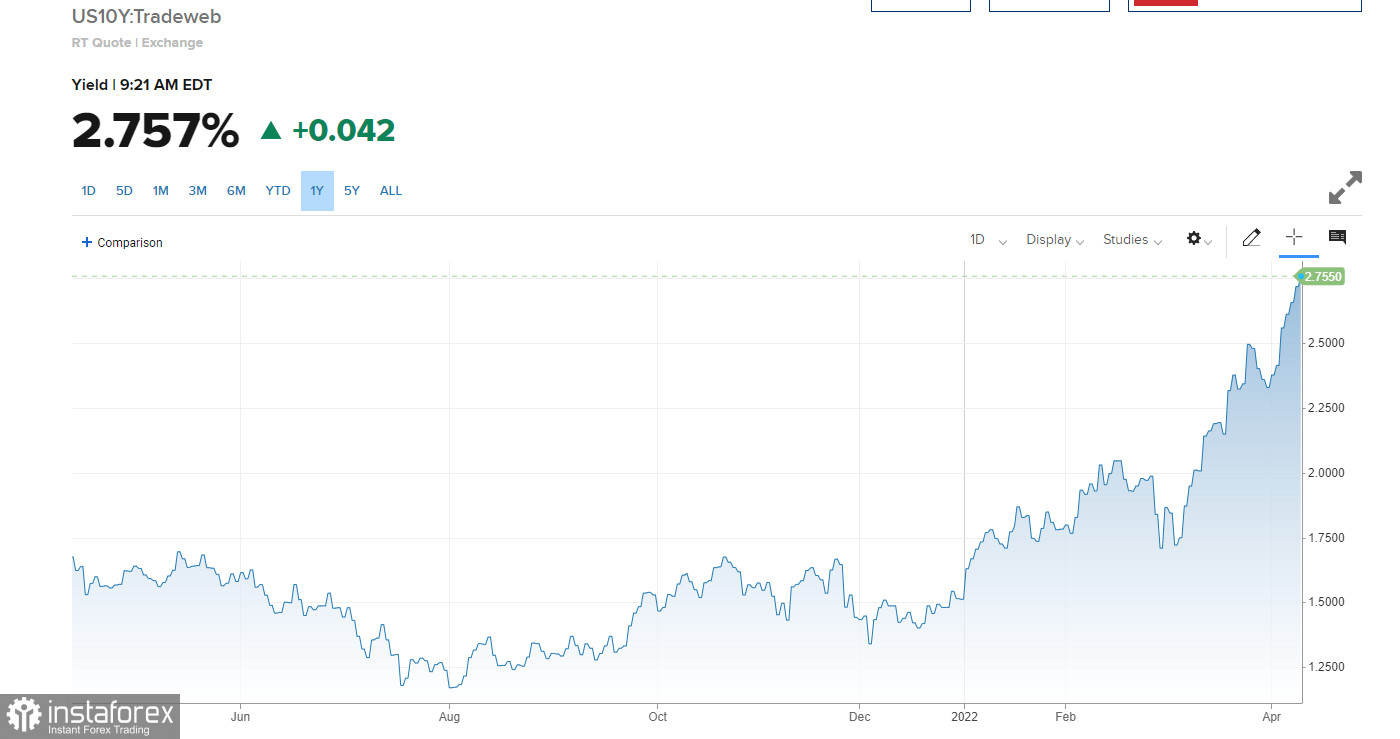US stock index futures traded in negative territory before Monday's opening bell. Treasuries also fell as investors focused on inflation and the likely monetary tightening by many central banks. NASDAQ Composite futures lost 174 points or 1.2%, while Dow Jones futures fell by about 125 points. S&P 500 futures decreased by 0.7% or 31 points. The cryptocurrency market also slumped, while the 10-year US Treasury bond yield increased to 2.75% for the first time since March 2019.

Last week, Fed officials signalled their plans to hike interest rates further and reduce the balance sheet to ease price pressure on the economy. These plans were listed in the FOMC March meeting minutes. European markets are under pressure from growing expectations of monetary tightening by the ECB this year, as well as the presidential election in France. Other factors influencing the markets are the lack of progress in peace talks between Russia and Ukraine and the new outbreak of COVID-19 in China.
Investors are worried by the prospects of a global economic recession. This month, quarterly reports will be released by various companies in the US, which should return confidence to market players. Currently, pessimism in the market is pushing stock indexes down.

Premarket movers
Shares of Twitter lost 1.5% during the premarket after Elon Musk stated he would not join the social media giant's board, despite owning a 9.1% stake in the company.
Chinese EV manufacturer Nio lost 8.4% during the premarket, as supply chain disruptions caused by the coronavirus outbreak forced the company to halt production of its electric cars.
Shares of Veru soared by 24.8% after the US pharmaceutical company reported "overwhelming" evidence of efficacy for its experimental drug for treating hospitalized Covid-19 patients.
AT&T gained 1.9% during the premarket after completing the spin-off of its WarnerMedia unit to Discovery Communications.
Shares of graphic chip manufacturer Nvidia fell by 3% following reports that the company would seek shareholder approval to double the number of authorized shares.

On the technical side, S&P 500 bulls failed to hold onto $4,488. Regaining lost ground would be the primary goal for bullish traders. If the index fails to settle above $4,488 early during the session, it could trigger another sell-off and push the index towards the closest support level of $4,433. A breakout below this level would cause the S&P 500 to fall towards the lows at $4,383 and $4,319. The uptrend could only begin if the index settles above $4,488 - from there the S&P 500 would test the resistance at $4,539. A breakout above this level would open the way towards the highs at $4,589 and $4,637.
 English
English 
 Русский
Русский Bahasa Indonesia
Bahasa Indonesia Bahasa Malay
Bahasa Malay ไทย
ไทย Español
Español Deutsch
Deutsch Български
Български Français
Français Tiếng Việt
Tiếng Việt 中文
中文 বাংলা
বাংলা हिन्दी
हिन्दी Čeština
Čeština Українська
Українська Română
Română

